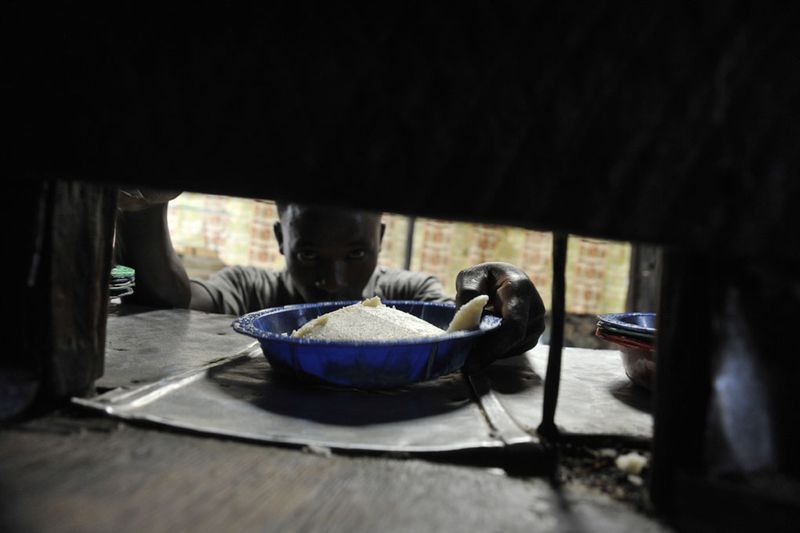
Ask a typical American what corn means to him or her, and you're likely to get a blank stare, unless they've read The Omnivore's Dilemma, Michael Pollan's best seller, or watched a movie like Food Inc. That person may say corn has taken over the American diet, caused the U.S. obesity crisis and contributed to environmental degradation. Corn, after all, is used in some way to produce everything from meat to snack chips and soft drinks.
But ask poor east Africans what corn, or maize, means to them and they'll tell you it is what sustains life.
As part of this project, I wanted to understand and capture the significance of maize to the east African diet, an idea I conveyed to photographer Riccardo Gangale. He understood immediately what I was after and set up a trip down to Nairobi's infamous Kibera slum. It is a sprawling, disease-ridden city within a city composed of mud shacks covered with rusty corrugated metal roofs. Estimates of the population vary widely. Popular lore puts the population at well over a million. The real number is probably significantly lower than that, according to experts, but still in the hundreds of thousands, and they are packed into an area of about one mile square. There are neighborhoods in Kibera, as well as the occasional clinic, church and even restaurants like the Paradise Hotel.
Here you can get the most widely eaten food in all of Kibera, ugali, about half a dozen ways. In the photo above, a waiter is taking a fresh plate of ugali that the cook has just served up. One of your options at the Paradise is ugali with matumbo, which I'm told is cattle intestines, for 35 shillings, about 50 cents. But that's pricey for Kibera. And what appears to be the most popular combination, here at the restaurant and elsewhere, is ugali with sukuma, or kale. It's cheaper, 25 shillings at the Paradise. And if you want to make it yourself, the kale, which you can sometimes find growing out of dirt-filled sacks in nooks of Kibera, like some illegal drug, can be had from a vendor for 5 shillings a bunch.
Ugali is nothing more than corn meal and water. You have to eat it with your hand, so what's more complicated than the recipe is figuring out how to do that gracefully. You take a glob of ugali, make it into a ball and then pick up a piece of your side, such as the kale. Kenyans of all economic classes eat ugali. But poor Kenyans say they eat it twice a day, every day. And if they can't afford milk in the morning, a thinner maize-meal porridge will do as a substitute.
After you've eaten ugali, "you have a lot of energy," says Mercy Atieno, 17, who lives with her 3-week-old baby and her 25-year-old brother.
Anna Akinyi allowed us to watch her make ugali over a small charcoal stove in front of the doorway to her shack. (One of the secrets to cooking on a charcoal stove, I found out, is mixing into the coals some clumps of clay soil. The clay retains the heat.)
Akinyi spoke little English, but when another Kibera resident sitting beside her told me that maize was vital because it made one "strong," Akinyi understood. She laughed and flexed her arms.




